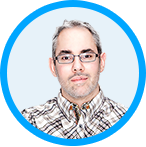Lights, oven, locks: Controlling your home from your phone - Talk Mobile

Presented by Blackberry
Talk Mobile Connected
Lights, oven, locks: Controlling your home from your phone
by Rene Ritchie, Daniel Rubino, Kevin Michaluk, Phil Nickinson

Over the years our homes have gradually improved, with better insulation, more efficient heating and cooling, modern layouts, and exceedingly solid building codes. But the infusion of technology into our homes has been slow, incremental, and typically severely isolated.
Sure, there have been computerized home automation systems for decades, but they've generally been unwieldy, expensive, and difficult to install in even new builds (let alone existing homes). But maybe rise of lightweight operating systems, miniaturized sensors, wireless networking, and cloud technology can making the automated house more of reality than we ever thought possible?
How can mobile technology and connectivity make our homes safer and more secure? And what good can a smartphone or tablet do us in the kitchen, or helping out with chores around the house? And when are we going to get to the day where every surface is an interface - and should every surface be an interface anyway?
Be an expert in 5 minutes
Get the latest news from Android Central, your trusted companion in the world of Android
Let's get the conversation started!




Connected home
Articles navigation
- Home security
- Video: Derek Kessler
- In the kitchen
- Video: Georgia
- Housework
- Displays everywhere
- Conclusion
- Comments
- To top


Digital locks and remote monitoring
By Rene Ritchie
Traditional key locks work fine. You stick a specially shaped piece of metal into a slot, everything lines up perfectly, you turn and open the door. But physical objects like keys have limitations. And if they're lost or compromised, the only solution is to replace the entire mechanism, keys and lock.
If your keys lost or compromised, the only solution is to replace the entire mechanism, keys and lock.
Mobile entry offers more options. The lock gets replaced by a number pad or even touchscreen. The key by a combination of mobile device and/or your finger. You can simply have a phone in your possession (something you have) or enter a code or pattern (something you know) or enable biometrics (something you are) or a combination of those.
You can generate an entry code for yourself, and codes for everyone in your family. If someone loses their phone, they can hop on the web and generate a temporary key instead of breaking a window. You can generate a temporary keys whether you're across town or across the globe. If the whole family is away, you can generate a temporary key that only works during certain time periods for a friend or family member to feed the plants, water the pets, and check that you did turn off the stove.

Unlocking the connected lock
Web-connected locks used to be the domain of high-end custom shops and do-it-yourself tinkerers, but recently several companies have come forward with plans to build mobile-compatible door locks.
Unikey's Kevo and the Kickstarter-funded Lockitron both use a combination of Wi-Fi network authentication and Bluetooth 4.0 low energy to allow the smartphone-as-a-digital-key owner to unlock an equipped door by merely approaching.
Several NFC-enabled door locks are on the market, and the recently announced ShareKey app developer by the Fraunhofer Institute is designed to allow NFC-equipped Android smartphones to access these locks, and even create temporary NFC keys for guest access.
Beyond keys, modern security systems can tie into mobile so you can monitor your alarms and security sensors and check in on security cameras. What once was locally stored surveillance footage is now loaded into the cloud.
Since safety transcends security, it's not difficult to imagine the next generation of mobile devices, the ones with biometric sensors, will be able to tie into systems to monitor your health and set off the right kinds of alarms if they detect anything from an accident to a medical emergency.
There's potential for abuse, for government intrusion, hacking, and mischief to be certain. But that's true with everything. The potential for mobile to make us safer and more secure at home, however, far exceeds any risks real or imagined.
Just, um, tape over any cameras pointed in the general direction of the bedroom, okay?

It's entirely possible to control your entire house through a mobile device
Derek Kessler / Managing Editor, Mobile Nations
01
If you could lock your house with your smartphone, would you?
876 comments


Put my refrigerator on the web and in my pocket
By Kevin Michaluk
Mobile devices have had a place in the kitchen for some time now. We can look all the way back to early laptops and smartphones and find people using them in the kitchen to look up and display recipes or build shopping lists while standing in front of the open refrigerator.
But times are changing, in part because our refrigerators are getting smarter. No longer is that big metal box just a collection of compressors, tubes, and heavy insulated compartments, and maybe a water dispenser and ice maker if you're so inclined. No, today the refrigerator is verging on being a smart appliance, with web-connectivity, awareness of its contents, and some real smarts with the right software.

The curious epicurean
The word epicurean describes one who seeks luxurious comfort and food. When they launched in 1996, Condé Nast combined it with "curious" to create Epicurious, one of the first successful food-focused web communities.
Epicurious's success is built around a community-built recipe database and forums. As a Condé Nast property, Epicurious also has a magazine-style angle, publishing articles about cooking, restaurants, culinary tourism, and interviews with famous chefs. Epicurious was quick to jump on the mobile bandwagon, publishing their first mobile app to the iPhone in 2009, and following that with apps for Android and Windows Phone.
Most of us don't have a refrigerator that's even remotely near smart. They're large, expensive, unwieldy appliances even when they're not computerized, and they're made to last for years upon years, so they're not something most of us replace on a regular basis. But when you do next find yourself shopping for a new refrigerator (likely after your current one has just kicked the freon bucket), you might find a few web-connected options in the mix.
It'll take a combination of cameras, NFC readers, weight sensors, and manual input for a refrigerator to really know what's going on.
They're still working out the kinks, but in a few years our refrigerators could be truly smart. The real hurdle, beyond web connectivity and a touch display, is in awareness of what's inside. It'll likely take a combination of barcode-scanning cameras, NFC tag readers, weight sensors, and manual input for whatever is in that tupperware you just tossed in for a refrigerator to really know what's going on.
Once the refrigerator knows what's inside, it can do a few things. It can keep track of what you've used (using those cameras, tags, and weight sensors) and add items to your shopping list on your smartphone when you're running low. It can take a tally of what's inside and suggest recipes based on those ingredients. And it can monitor how long that cheese has been sitting there and suggest that maybe you should toss it out.
The refrigerator isn't the only connected appliance coming to the kitchen. We've seen demoes of an Android-powered oven, which allows for not just recipe look-up and precise timing and temperature control, but even remotely activating pre-heating so it's warmed up and ready to cook when you get home.
The future of our kitchens is in connection, and our smartphones are going to have a role to play in that.

We could end up like those huge, voluminous beings at the end of WALL-E that couldn't even walk on their own because our technology does everything for us.
Georgia / Host, ZEN & TECH
02
What would you do with a web-connected kitchen?
876 comments


Smartphones are great, but they still can't do the dishes
By Phil Nickinson
Your phone can't take out the garbage. Your tablet won't do the laundry or the dishes. No app is going to sweep the floor. (OK, there are app-controlled robots that do this. But still.) The problem with housework and yardwork is that it's manual labor.
Our smartphones are great for taking the effort out of a lot of data-driven tasks, but they're very poor at being physical tools. A smartphone's not going to pick up after the kids or mow the lawn, but what mobile can do is make it all suck a little bit less.
The first thing that comes to mind is, of course, music. I like to cook. And I especially like to cook with music on. A smartphone or tablet combined with a good portable Bluetooth speaker handles this quite nicely and easily. Put on a funky, upbeat playlist and get cooking.

Tony Fadell's Nest
The former Apple designer behind the iPod in 2010 founded home automation company Nest Labs, seeking to create a better thermostat. The Nest Learning Thermostat is an electronic, programmable, connected thermostat for home use, but unlike the typical digital thermostat it's also a learning and self-adjusting device. Nest's controls consist of a single dial to adjust the temperature. As you adjust the temperature throughout the day, Nest is designed to learn your climate preferences and will start automatically making changes for you when you would anyway. Nest is also controllable remotely via apps for iOS and Android.
As long as we're in the kitchen, might as well bring a tablet along with you. My wife loves her paper recipe books. And there's a place for 'em. Me? I just fire up an app and for something new to make, and it's right there on the screen. I can easily scale the portions up or down and watch the ingredient amounts automatically adjust. I can check off the ingredients I've used and the steps I've completed, making it that much easier to follow along.
My wife loves her paper recipe books. Me? I just fire up an app and search for something new to make.
Loathe yard work? Again, music. Though a nice pair of Bluetooth headphones will probably be more useful than a speaker.
My favorite use of a smartphone while cleaning, however, is the before-and-after picture. Because often times -- and this is especially true if you have children -- any sort of cleaning frenzy is short-lived, if it's believed to have happened at all. So I tend to treat it like I would a crime scene -- copious amounts of documentation. "See? Here's what it looked like before. And here's what it looked like 10 minutes ago, before the kids got home. I'm going to go play golf now."
Now if only we could find some app that would scrub the bathroom.
Talk Mobile Survey: The state of mobile connectivity


When can every wall, every table, and every window be an interface?
By Daniel Rubino
Will the future be lit by LED panels and interactive touch interfaces for every little task and feature in our home, or will we resist and keep them isolated to the living room, office, and occasionally the bedroom? That's an interesting question as the costs for such technology drop and people come up with new ideas for employing mobile technology.
We've already seen "smart" refrigerators, washers, and other appliances, though so far their intrusion into the household as remained niche. Partly because they're large expensive appliances we don't normally think of as being smart, and partly because they're large expensive appliances we don't replace on a regular basis.

The original Surface
Microsoft dabbled in touch computing for many years, but its plans took on a new urgency after the 2007 unveiling of the iPhone. Microsoft has partnered with manufacturers to create Windows-powered tablets before, but it was the 2008 Microsoft Surface that really ignited imaginations.
The 2008 Surface ran Windows Vista under a 30-inch rear-projection display mounted face-up in a table. It used infrared cameras to capture multi-touch interactions on its surface, as well as scanning tags on objects placed on the screen to display related interactive content. A second generation shipped in 2011 with an upgrade screen and Windows 7 software, and rebranded in 2012 as PixelSense so as to not confuse with the newly-announced Surface tablet.
Image Source: Wikipedia
On the face of it, asking if everything surface should be an interface seems absurd. Of course it should. In fact, whether we like it or not, the impetus to make everything digital (including ourselves) will overtake any common sense reasoning not to.
That's not to say it will be an easy trip. High prices, things breaking down, failed experiments and letting the market work out what people do and do not want will take time. But ever since The Jetsons first appeared on our televisions in 1962, people have yearned for the digital future life.
Enabling a high level OS into small devices is what will drive innovation.
The first step in the process will be the reduction of our operating systems to run on lighter and thriftier hardware. Microsoft is doing this with Windows 8 Embedded and Android is already there. Enabling such a high level OS into such small devices is what will drive innovation as developers won't be hampered by API or connectivity limitations.
Of course, it's going to take a lot of user interface work to get these newly-connected things to where they need to be. I want Windows on my computer. I don't necessarily want to be interacting with Windows in my bathroom mirror or built in to my coffee table - what I want is relevant content, controls, and access for the situation. A combination of multitouch, voice, and touchless gesture controls will come in to play here.
Unfortunately, like all things in technology, we tend to dream bigger than what can be achieved right away, so although we are certainly headed into the all-digital age where every surface is an interface, it will be another decade at least before we really start to see it take hold.
03
Which surface in your house do you most want to be a display?
876 comments


CONCLUSION
Mobile is playing an increasingly important part in our lives, and it makes sense that it'll play a role in our homes as well. We're already carrying around these powerful miniature computers, so why not use them to control our thermostats, security systems, ovens, door locks, televisions, and refrigerators?
A lot of this is still a ways off for most of us, thanks to the costs associated with upgrading our homes. Smartphones and tablets typically cost much less than a top-of-the-line web-connected refrigerator or oven, and while it's usually relatively easy to replace an old dial-driven mechanical thermostat with one that's computerized, it's not something most people are thinking about upgrading - even if there are major convenience and cost-saving aspects to doing so.
The living room might be the next great battlefield for consumer technology, but it's just a front in the overall war for dominance over whole-home computing. Be it in the kitchen, the living room, or the bedroom, mobile tech integration is coming - though maybe not as quickly as we would like.













